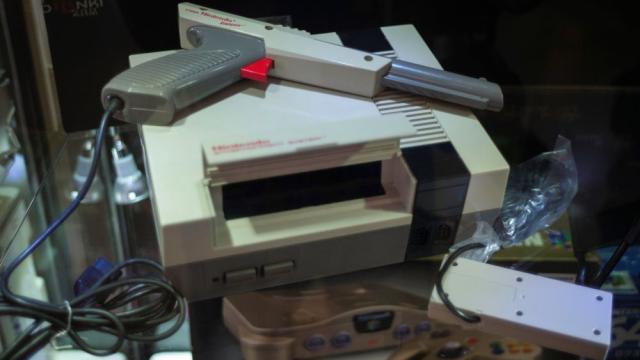Best known for his work on the NES and SNES, industrial designer Lance Barr has retired from his position as Design and Brand Director at Nintendo of America.
As spotted by Nintendo Life (via Game Industry), Barr updated his LinkedIn profile to “Retired,” writing, “After almost 39 years at Nintendo, I am retiring and moving onto ‘other’ projects.”
Barr entered Nintendo of America in December 1982 as a part-time gig, while he was still getting his MFA in Industrial Design from the University of Washington. Within three years, he’d be tasked with what would become one of the 1980s iconic industrial designs, the Nintendo Entertainment System.
Nintendo decided the design for the original Famicom, spearheaded by engineer Masayuki Uemura, didn’t seem like its appeal would translate to the US market (heck, its colours were based on a scarf then-president Hiroshi Yamauchi liked). Barr would work on the external casing redesign, aiming to appeal to American consumers.
In a 2005 interview with Nintendojo (via Tales From the Collection), Barr recalled how the design was supposed to look like hi-tech stereo equipment, instead of a toy. “The original design of the NES was worked out over several months, including a stay of a couple of months while I worked in Japan at NCL [Nintendo Co., Ltd].”
The prototype design was flat, slim, and sleek, coloured in grey and black. But the reaction at its CES debut was not good.
According to Game Over: How Nintendo Conquered the World, Nintendo of American president Minoru Arakawa thought it needed to fit next to a VCR.
In a 2005, Nintendo of America’s Don James recalled of his and Barr’s experience on the NES:
We came back from that show and our president Mr. Arakawa called myself and my designer in and said, ‘This is the shape of what they [Nintendo Japan] want to produce here. Can you make it look good? You’ve got an hour to do.’ And so we went back to the drafting board, and we were all pissed off, because we had spent all this other time on this other design. We came up with that grey and the stripe across the top in about an hour and presented it to him. And the next thing we know, ‘poof’, that’s what it was.
And so, the NES was born. The console would be a massive hit in North America. When it was time to launch the SNES, the console casing was once again redesigned. “The Super Famicom was maybe ok for the market in Japan,” said Barr. “For the US, I felt it was too soft and had no edge.” For him, the Super Famicom looked more like a bag of bread than a video game console.
Nintendo’s headquarters started handling all console casing designs from the mid-1990s, in order to have a unified global look as well as cut down on manufacturing costs. Nintendo now localizes colours for each region through colours, explains Barr.
“I always thought if I had the time,” said Barr, “I would have liked to make the original NES even better.”
Besides the NES and SNES, Barr also worked on the NES Zapper, the NES Advantage, the NES Max, the NES Hands Free Controller and more recently, the Nintendo Wii and the Wii Nunchuk.

Leave a Reply